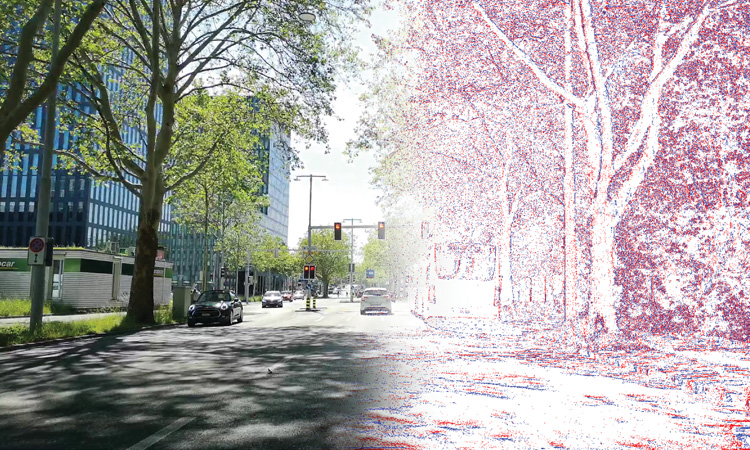Feature
Event Cameras: A New Imaging Paradigm
Unlike conventional cameras, neuromorphic cameras mimic how human eyes work by detecting and recording only changes in a scene, opening doors to new imaging possibilities.
 [Robotics and Perception Group, University of Zurich, Switzerland]
[Robotics and Perception Group, University of Zurich, Switzerland]
Imagine the human eye as an optical sensor. It captures a constant stream of visual data, converting incoming light into electrochemical signals that allow the brain to create a panoramic view of the surroundings. But the retina that lines the back of the eye achieves much more than a simple photodiode: a succession of specialized cells decodes the raw optical data, extracting the most important features, discarding redundant information, and sending to the brain only what’s useful for decision making and producing a dynamic image. This crucial pre-processing step allows the brain to make sense of vast amounts of raw optical data more quickly, reconstructing a 3D view of the world in real time and allowing humans to react almost instantaneously to fast-moving events.
…Log in or become a member to view the full text of this article.
This article may be available for purchase via the search at Optica Publishing Group.
Optica Members get the full text of Optics & Photonics News, plus a variety of other member benefits.
